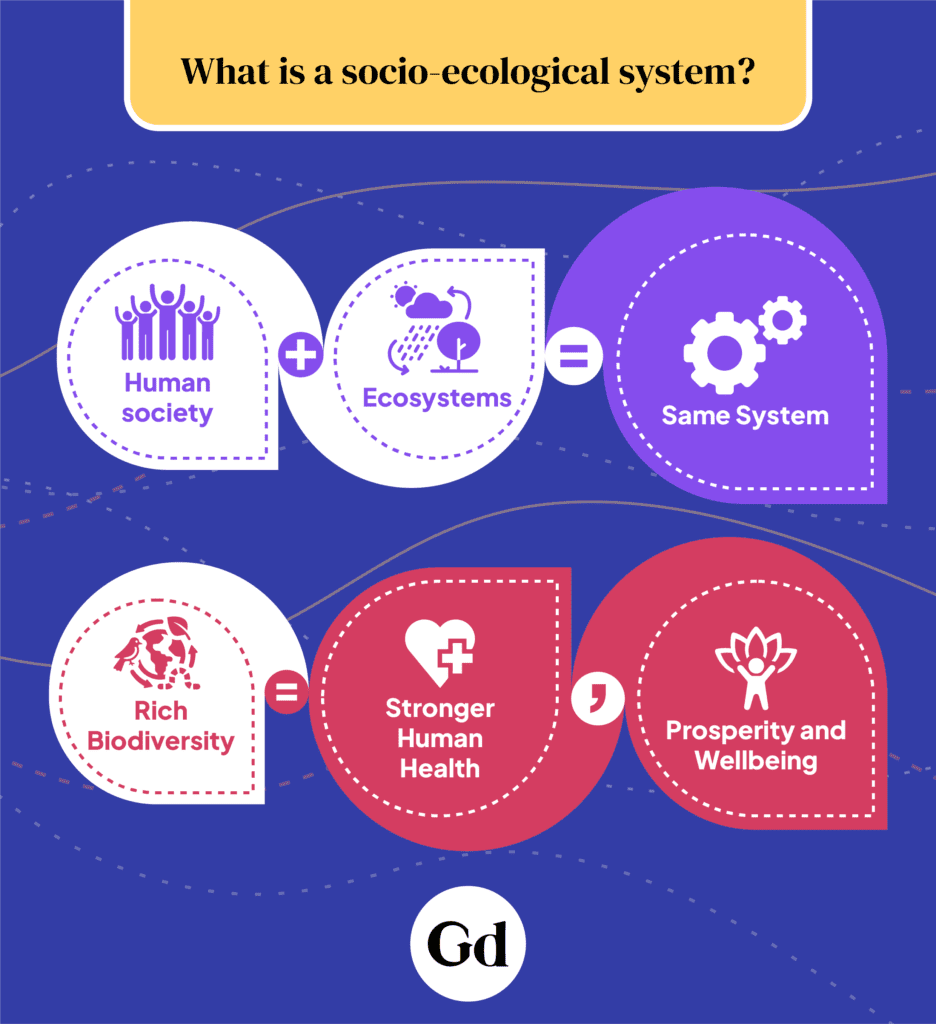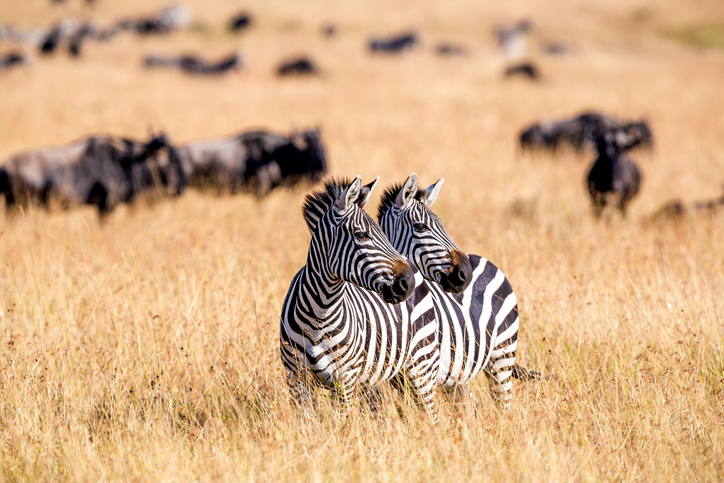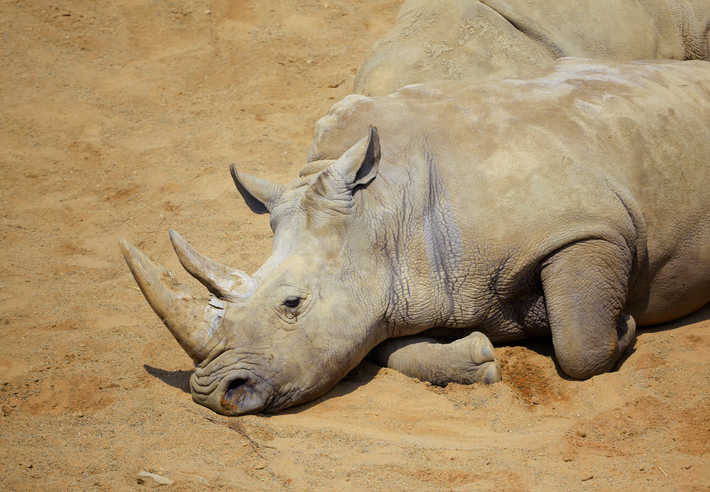Biodiversity loss threatens human health and prosperity. This blog shows why we need to see humans and nature as part of the same system, and how taking this view will support our wellbeing and improve social inclusion.
The loss of biodiversity, the decline in ecosystem health and the rise in climate change’s adverse impacts are no longer surprising news. The consequent impacts on human wellbeing, from food insecurity and income loss, through to illness and displacement, are also well established.
However, despite all the evidence, government organizations are still woefully slow to adopt decisions and take financial and technical actions that address these problems.
A welcome move in intergovernmental policy, however, comes courtesy of the Kunming–Montreal Global Biodiversity Framework. Adopted under the Convention on Biological Diversity (CBD), the Framework acknowledges the need to motivate people across multiple scales – from individual consumers and producers, through to businesses and policy-makers – to work towards its vision of a world living in harmony with nature by 2050.
The Framework advocates for a whole of society and whole of government approach to achieve its goals and targets. This requires all CBD Parties to align their national policies in this direction.
Adopting this approach involves difficult administrative challenges and needs careful reflection, design, and uptake. But it has the potential to be a game changer because it forces us to look at human society and ecosystems as one socio-ecological system. This is not a new concept, but it certainly could be considered a novel approach in policy-making.
What are socio-ecological systems?
A socio-ecological systems approach to decision-making takes into consideration the interdependence between people and nature. It allows a more nuanced understanding of the factors and actions that affect the integrity and wellbeing of ecosystems and human societies. Furthermore, it helps show how choices and decisions made in one sector affect others in various contexts.
For example, monocropping (growing one type of crop on the same piece of land) may support food security. But it is bad for nature. It results in the loss of biological resources, like plants, animals and minerals, as well as ecological processes. Ultimately, humans lose options to support their health and wellbeing, e.g. plants for medicine or climate/pest resilient varieties.
Socio-ecological systems essentially recognize that, within a landscape or seascape, multiple actors seek multiple benefits from its diverse array of contributions to society and the economy.
Depending on the stakeholder, these non-mutually exclusive benefits could be:
- Relational: i.e. where people have a relationship with different aspects of nature. For example, with a sacred or aesthetically beautiful place. Nature can also be educational, or produce special varieties of crop linked to cultural identities, for instance. Relational benefits, in fact, inform the production, consumption and management habits of populations in different contexts.
- Instrumental: where nature provides a good, such as food, medicine or fiber, or something that helps produce a good.
- Intrinsic: the value of certain resources is that they simply exist.
The uniqueness of the socio-ecological systems approach is that it embraces the diversity of social and ecological dimensions across different types of socio-political, environmental, and economic contexts. Furthermore, it allows informed choices to be made about the trade-offs that arise during human–human and human–nature interactions. That is to say, issues of equity and broader sustainability are embedded in the conceptual design of such systemic approaches.
Socio-ecological systems approaches go beyond the better-known nexus approaches, which look at interconnections between related sectors, such as the food-energy-water nexus) as well as systems approaches within a sector (e.g. agri-food systems or health systems). Nexus and systems approaches still do not adequately factor in the full gamut of activities and inherent values across a landscape or seascape.
On the ground, socio-ecology gives a greater sense of agency to every actor group, including marginalized peoples, such as indigenous peoples and local communities, and others including migrant populations in cities. It empowers them to be part of the solution to biodiversity loss and climate change impacts, and to help ensure a thriving human population. It further allows the space for other non-mainstream planning and assessment models (e.g. inclusive wealth, the degrowth economy and the caring economy) to capture the growth and prosperity of an economy.

What is socio-ecological resilience?
Socio-ecological resilience is “the capacity to adapt or transform in the face of change in social-ecological systems, particularly unexpected change, in ways that continue to support human well-being”.
Simply put, it is a state of anticipatory preparedness that ensures that we can cope and adapt to various disruptions to the socio-ecological system that may arise from natural, social, or economic factors.
This needs to be actively cultivated, however, and it must address several imperatives, including:
- Basic human needs: e.g. food, health, income, and shelter.
- Security-related needs: e.g. access to natural resources, rights, and the agency to take decisions.
- Belonging needs: e.g. sense of place, identity, equity, and fairness.
- Self-esteem needs: e.g. confidence to negotiate and education.
All of these are linked to the health of ecosystems and biological resources, and the capacities, skills, and knowledge of the people using them. Further, achieving socio-ecological resilience requires multiple and diverse sets of actors to collaborate to identify solutions tailored to different contexts.
Aligning human activities towards promoting resilience requires multi-pronged initiatives to ensure that, among others:
- Different sectoral policies do not have conflicting goals.
- Planning and implementation follow principles of co-learning, co-design, peer review, and support.
- Developing inclusive partnerships and co-operation between different actor groups is actively sought and promoted.
- Adequate finance that is required at points of intervention is accessible and fit for purpose.
- Agencies (whether state led or non-state organizations) invest in effective communication measures and reflexive capacity development activities that allow peer learning and learning across different types of expertise.
Although this may seem like an idealistic wish list, it is necessary that everyone is involved to achieve the goal of living in harmony with nature. Many examples across the world show that such an approach works (see, for instance, examples from the International Partnership for the Satoyama Initiative). What we need now is the political will at every scale of implementation to make the feasible a realistic possibility.






